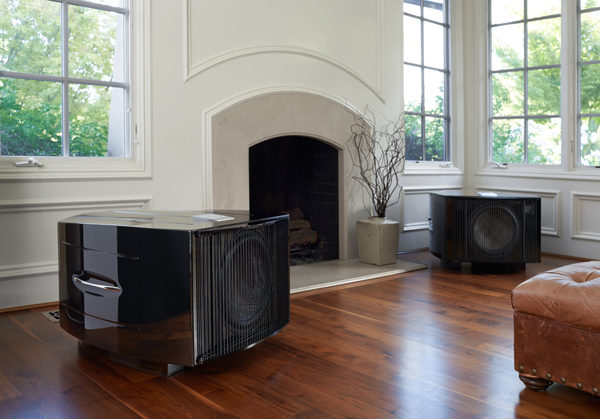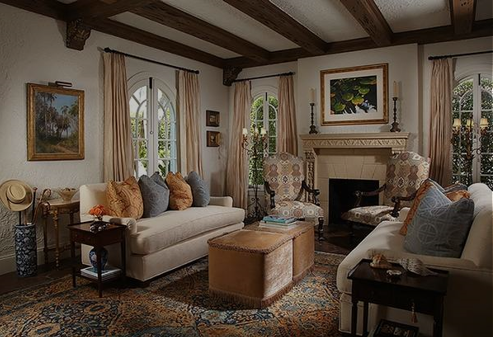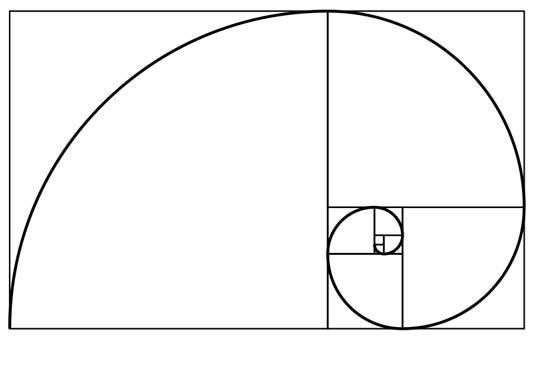Blog
Everything’s Golden
The Golden Mean Equipment & Set-up

I am often asked to consult stores looking to upgrade the sound they offer their clients–especially in regard to their reference systems. As you can imagine, a fair amount of that consulting has to do with their interest in REL. But we look at all aspects of their rooms, speaker, electronic and source component lines to help them better understand how and where to make upgrades that will yield the most improvement.
We require the focus to be on full range, state of the art performance. If a store’s vision is skewed toward a deliberately iconoclastic mix of line- being odd just to be odd-we’re not interested. We want to help expand the base of quality, full range, systems produced by quality manufacturers that will be around 10-20 years from now to service their customers.
To Improve the Sound, First Improve the Room:
Without question, high end clients and stores often ignore the single most important component; the sound room itself. I once was called in to try to help a wealthy client in Texas, we’ll call him Cowboy. Frustrated with the sound quality his system delivered, he was willing to spend money to realize his dreams but his systems never delivered what he heard at audio shows he attended. His home was over 4,000 square feet (400 square meters) and his property extended for another 66,000 square feet (6600 sq. meters/over an acre). He had just spent over $25,000 in a new Audio Research preamplifier—his 3rd in 10 years–and new mains cables and preamp interconnects, plus a mains power conditioner. Clearly, this was a man who valued sound quality. Further probing revealed top of the line components up and down the line.
At the start of the consult I asked the obvious question: please send me a picture or three of your room and the system, how it’s positioned, etc. Ten minutes later, the pictures began arriving and the answer to why he was frustrated with the sound quality of his system was immediately obvious. His room was beautifully appointed, but simply too small for the system. I stifled the impulse to use the old “10-pound brick in a 5-pound bag” analogy. To be clear, I was looking at about $300,000 worth of some of the finest audio equipment ever assembled in a room that was only about 14’x16’x8’. We’re talking about large Wilson Audio speakers, Audio Research heavy metal—you get the picture.
 We discussed the issue, the room being dimensionally far too small and the wrong dimensions. When one measurement (ceiling at 8’) is a direct multiple or divisor of another, deep peaks and valleys in frequency response occur. The ceiling being exactly half the measure of the room’s length guaranteed a poor result and the room was far too small to release all the energy the system was attempting to output.
We discussed the issue, the room being dimensionally far too small and the wrong dimensions. When one measurement (ceiling at 8’) is a direct multiple or divisor of another, deep peaks and valleys in frequency response occur. The ceiling being exactly half the measure of the room’s length guaranteed a poor result and the room was far too small to release all the energy the system was attempting to output.
As it happened, he had plenty of space to work with (66,000 square feet), all the money anyone could need, and great gear. I wish I could tell you this story had a happy ending. Instead, I can tell you that it quickly became evident that he wasn’t willing to spend any money correcting the hugely obvious problem in his system (the room). Instead he wanted to know if I couldn’t just “fix” the problem by my prescribing some magic room treatment.
Here’s the simple truth, most well-heeled audiophiles are too much like Cowboy. We want the latest toys for our system, but actually working with them in a correctly dimensioned, well-constructed room large enough to support our audio ambitions is generally ignored. Why? Some of it is that everyone who gets into this hobby is a bit of a gearhead. But also, it’s too hard to find experts who have built great sounding rooms, made mistakes and learned the practical do’s and don’ts that go into great room construction.
Our state of the art design studio where the past two generations of RELs were designed and tuned is a medium-sized room with two walls we inherited from the existing build out, a former architect’s office. I worked the calculator and used as much as I could, adjusted a few dimensions, turned it over to our contractor and then checked to make sure that the design was built to the dimensions I specified.
The Golden Mean:
Having built five serious sound studios, I strongly recommend building using Golden Mean Theory. The Greeks knew more about the natural world than most of modern humanity and they got this one perfect. We’ll share links elsewhere, but the Golden Ratio is 1.618:1. Below is the Golden Ratio used to create a perfect spiral out of Golden Mean rectangles.
How this is used to design great sound rooms has been made simple with basic room calculators that figure out for you the optimal room dimensions. Simply plug in the height of your room and the calculator will quickly build you a three dimensional space and define the length and width. A 10’ tall room yields a width of 16’ and a length of 23’3”.
We suggest using PS Audio’s room calculator which is accompanied by an excellent article. Note: Of the three room shapes shown on PS Audio’s room calculator, layout 3 is by far the best sounding.
Reference quality performance requires the culmination of three key ingredients:
- A great room, beginning with balanced dimensions.
- Great equipment, well-selected to create a balance of virtues.
- Great set-up skill. No matter how good the room, and how fantastic the gear, all that can be undone with poor set-up skills.
In the end, the system requires all three of the above to be present in good measure. Start with a good room, often only two walls will need to be changed to bring your room into correct dimension. We did this and changed the ceiling height to take advantage of the extra-thick joists in our ceiling resulting in a larger room than would have been possible. Using quality, expensive Bay Area contractors, the entire room cost us around $20,000. Use this figure as a reference point; in Europe this figure may be slightly on the high side, in many parts of North America it would be well on the high side.
If you want to achieve that breathtaking dimensionality that high end reviewers gush about, start with upgrading the room itself while using your own equipment. Do so in stages—few of us have $20,000 (£17,000) to throw at it in one go. Spend a few thousand and make the dimensional changes while using your existing equipment and items like rugs and wall hangings for temporary room treatment.
If you are nervous about getting it right, hire a true professional to consult on your behalf. The best I know is Tony Grimani and unlike many others who charge a king’s ransom, Tony is extremely fair in his pricing. He also runs a company that makes and sells acoustic treatments, so it’s a bit of a one stop shopping experience if you want it to be. But if you are serious and have the means, get the room right and every other expenditure you ever make will sound three times better than making do with a defective room.










